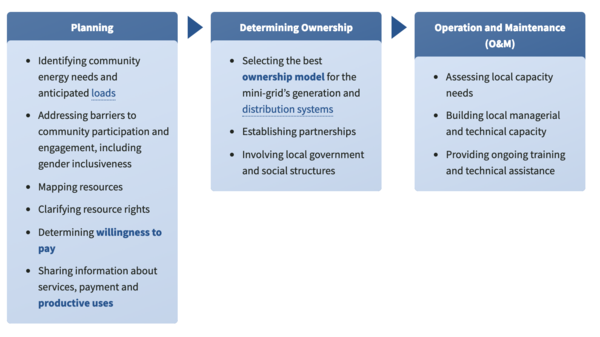Knowledge fuels change
For over a decade, Energypedia has shared free, reliable energy expertise with the world.
We’re now facing a serious funding gap.
Help keep this platform alive — your donation, big or small, truly matters!
Thank you for your support
Community Engagement
Introduction
The main aim of the energy projects is to serve the target community. Therefore, it is highly important to engage with the target community before, after or during the energy projects, to understand their needs and demand. This will ensure the involvement of the community in the project and help in successful execution of the project. Community engagement should also take into account the fair representation of women, indeginous groups and other minorities groups who previously did no have a say.[1] A study in India also found out that community-based mini-grid projects are especially effective when the community members are active stakeholders.[2]
Community engagement at different stages of the project is shown below:
Community engagement is usually an overlooked topic during energy project planning. This article summarizes all the articles on energypedia concerning this topic. Please add your experiences and questions to this article!
Community Engagement - Relevance
See also social risks in energy projects.
Examples for Different Technology Approaches
- Lessons Learnt for Community Based Pico- and Micro-hydropower Schemes
- Community Involvement in Mini-grids
Experiences in selected countries
Nepal
Kenya
- Kenya: Best Practice Case Studies
- Community Engagement for Power Projects
- Community Engagement in Kenya, social licences
Indonesia
Guatemala
Further Information
- Portal:Energy Access
- Energy Planning for Rural Areas
- Rural Electrification
- Community Power
- Energy Transition in Germany “Energiewende” and Financial Solutions for Innovation and Sustainable Development in the Energy Sector - FINE Project (BMBF)




















